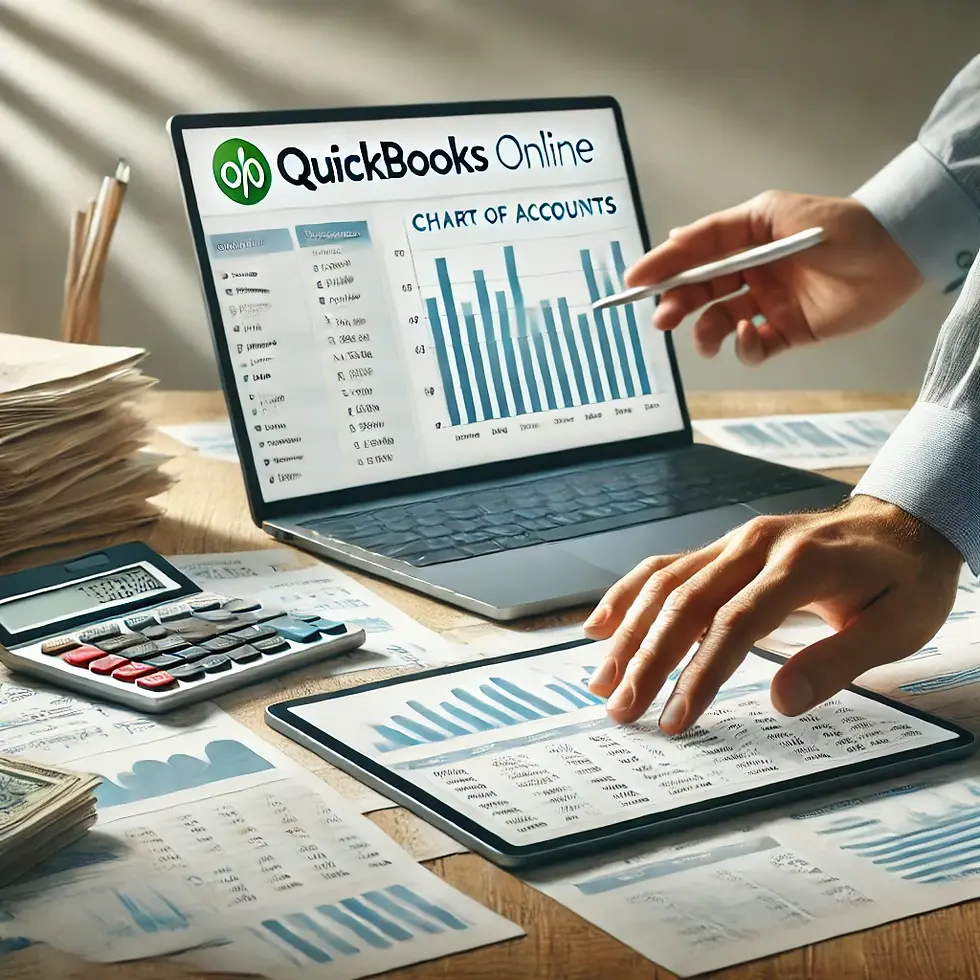QuickBooks and AI - Your New Small Biz Sidekicks
- Charles Stoy
- Aug 5, 2024
- 2 min read
Alright, fellow small biz owners - listen up. I'm about to let you in on a little secret that's gonna change the game for your finances. It's all about using QuickBooks Online together with a little AI magic.
Here's the deal - QuickBooks is already your trusty sidekick for keeping track of sales, expenses, invoices, and all that other money stuff. But did you know you can take it to the next level by hooking it up with a neural network? Yup, you heard me right.
First, you'll use QuickBooks' API to pull in all that precious data about your business. Then you'll clean it up and get it ready for your neural network to work its magic. This neural network is basically a computer program that can spot patterns in your sales and expenses.
Once you've got that set up, you can start using the neural network to make predictions about your future cash flow, identify areas to cut costs, and even forecast future sales.
Sounds pretty sweet, right?
The best part is, it's not as complicated as it sounds. There are even some great tools out there that make it super easy to connect QuickBooks and AI. So you can spend less time crunching numbers and more time doing the work you actually enjoy.
Here is an example of an implementation written in Python:
Step 1: Get Data from QuickBooks Online
To get data from QuickBooks, you'll need to use their API. Here’s an example function to get sales data:
import requests
import pandas as pd
def fetch_data_from_quickbooks(api_url, headers):
response = requests.get(api_url, headers=headers)
data = response.json()
return pd.DataFrame(data['Sales'])
# Example API URL and headers (You need to get these from your QuickBooks account)
headers = {
'Authorization': 'Bearer {access_token}',
'Accept': 'application/json'
}
# Fetch data
sales_data = fetch_data_from_quickbooks(api_url, headers)
Step 2: Prepare the Data
Normalize the data so it's easier for the neural network to work with:
from sklearn.preprocessing import MinMaxScaler
scaler = MinMaxScaler()
sales_data_normalized = scaler.fit_transform(sales_data)
Step 3: Create a Neural Network
Build a simple neural network:
from keras.models import Sequential
from keras.layers import Dense
model = Sequential()
model.add(Dense(64, input_dim=sales_data_normalized.shape[1], activation='relu'))
model.add(Dense(32, activation='relu'))
model.add(Dense(1, activation='linear'))
model.compile(optimizer='adam', loss='mean_squared_error')
model.fit(sales_data_normalized, sales_data['target'], epochs=100, batch_size=10, verbose=1)
Step 4: Use the Neural Network
Create a function to predict future sales:
def predict_future_sales(new_data):
new_data_normalized = scaler.transform(new_data)
return model.predict(new_data_normalized)
Benefits
Better Predictions:
Predict future sales and expenses more accurately.
Smart Inventory:
Know how much stock to keep so you don’t have too much or too little.
Customer Insights:
Understand what your customers like and target them better.
Catch Problems Early:
Spot unusual patterns that might indicate fraud or mistakes.
Smart Pricing:
Adjust prices based on demand to make more money.
Save Time:
Automate data analysis so you can focus on other tasks.
By following these steps, a small business can use QuickBooks Online data with a neural network to make smarter decisions and run their business better.
Trust me, once you've got this dynamic duo working for your small biz, you're gonna wonder how you ever lived without them. So what are you waiting for? Go forth and automate your finances!






Comments